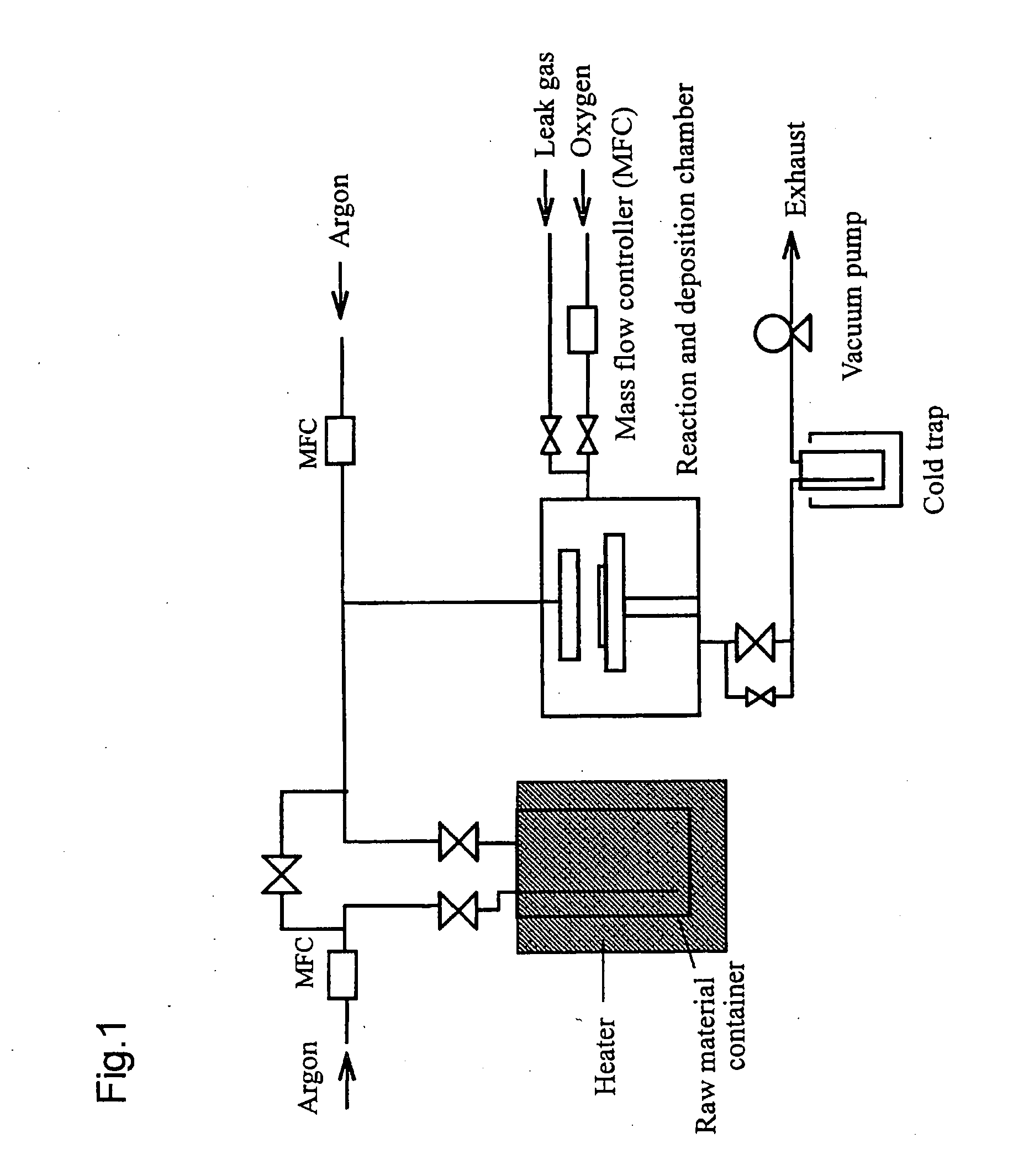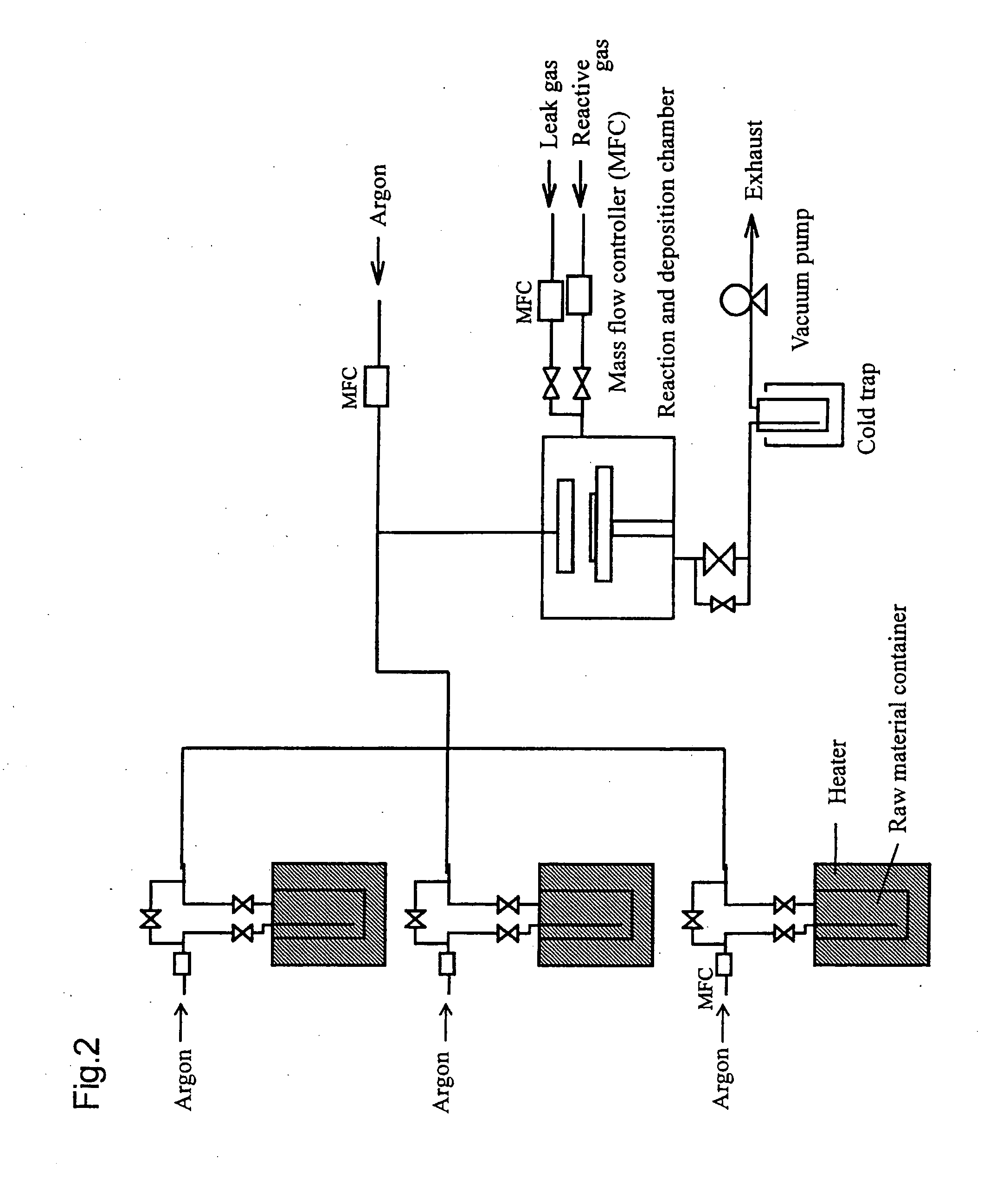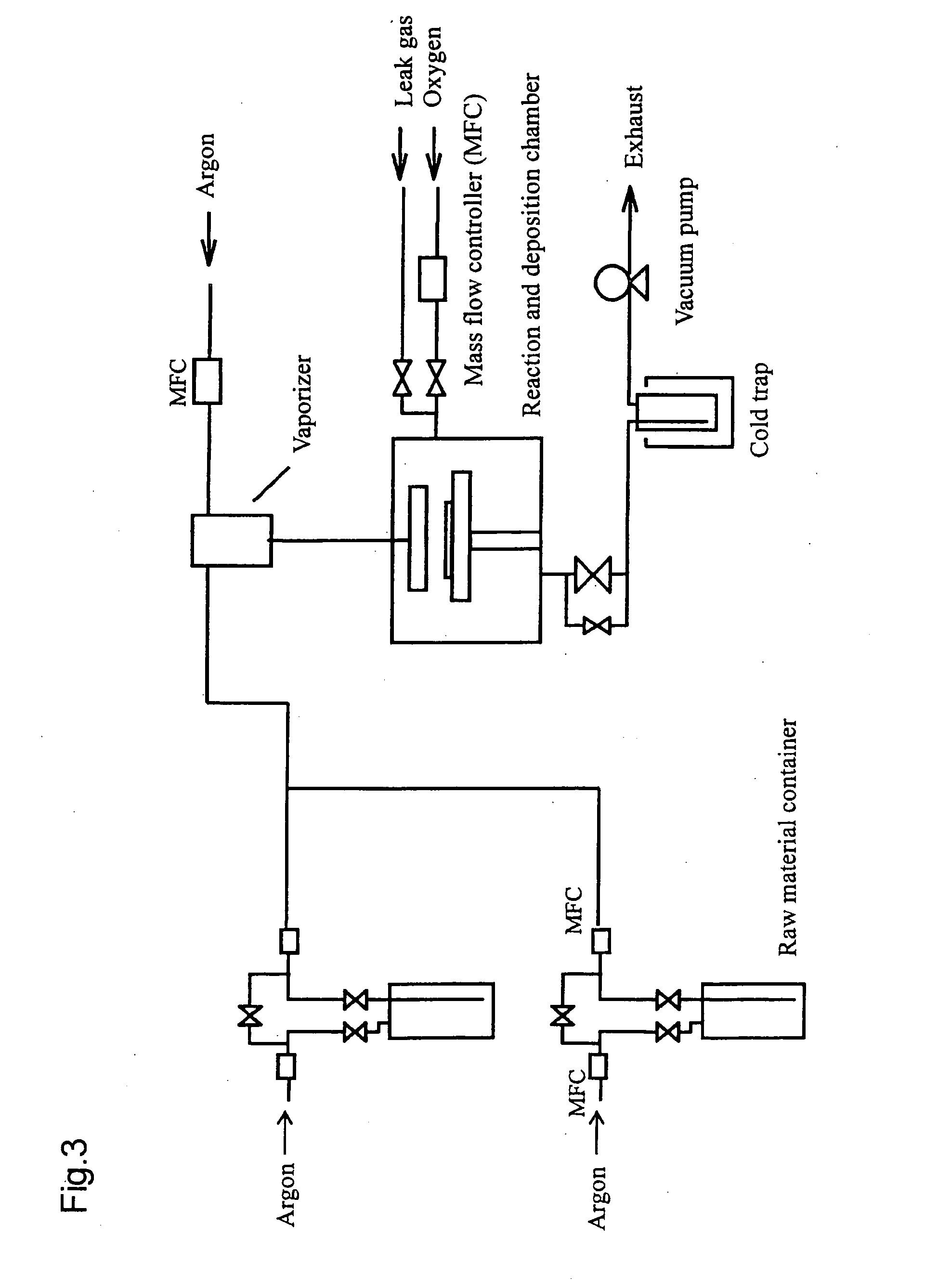Thin film-forming material and method for producing thin film
a technology of thin film and forming material, which is applied in the field of thin film forming material, can solve the problems of insufficient amount of vaporization or temporal variation of vaporization,
- Summary
- Abstract
- Description
- Claims
- Application Information
AI Technical Summary
Benefits of technology
Problems solved by technology
Method used
Image
Examples
production example 1
Production of Bis(octane-2,4-Dionato)zinc
[0049] A reaction flask filled with dry argon was charged with 1.0 mol of octane-2,4-dione, 1.0 mol of sodium hydroxide, and 1000 g of methanol dried to the extent that the water content was less than 5 ppm. Here was added a solution containing 600 g of methanol and 0.5 mol of zinc nitrate hexahydrate dropwise at 25° C. The resultant mixture was stirred at 25° C. for 5 hr, the solid was filtered off, and the solvent was distilled off. The resultant residue was distilled under reduced pressure to obtain 53 g (yield 30%) of a yellow liquid from a fraction at a column top temperature of 128° C. under a pressure of 20 Pa. The obtained yellow liquid was identified as the desired compound, bis(octane-2,4-dionato)zinc. The analytical results of the yellow liquid are shown below.
(Analytical Results)
[0050] (1) Elemental analyses (CH: CHN analyzer, metal analysis: ICP-MS) [0051] C: 54.8 mass % (theoretical value 55.3%), H: 7.5 mass % (theoretical ...
production example 2
Production of bis(2,2-dimethyl-6-ethyldecane-3,5dionato)zinc
[0059] A reaction flask filled with dry argon was charged with 0.8 mol of 2,2-dimethyl-6-ethyldecane-3,5dione, 0.8 mol of sodium hydroxide, and 1000 g of methanol dried to the extent that the water content was less than 5 ppm. Here was added a solution containing 600 g of methanol and 0.4 mol of zinc nitrate hexahydrate dropwise at 25° C. The resultant mixture was stirred at 25° C. for 5 hr, the solid was removed by filtration, and the solvent was removed. The resultant residue was distilled under reduced pressure to obtain 29 g (yield 28%) of a light yellow liquid from a fraction at a column top temperature of 151° C. under a pressure of 20 Pa. The obtained light yellow liquid was identified as the desired compound, bis(2,2-dimethyl-6-ethyldecane-3,5dionato)zinc. The analytical results of the light yellow liquid are shown below.
(Analytical Results)
[0060] (1) Elemental analyses (CH: CHN analyzer, metal analysis: ICP) Z...
example 1
Production of a Thin Film of Zinc Oxide
[0066] Using the apparatus shown in FIG. 1, a thin film of zinc oxide was produced on a silicon wafer under the following conditions. The film thickness and composition of the produced thin film were examined by X-ray fluorescence spectroscopy. The results are shown below.
(Conditions for Production)
[0067] Zinc-containing material for CVD: bis(octane-2,4-dionato)zinc [raw material temperature: 180° C., pressure: 666 Pa, carrier gas: argon 150 sccm], oxidizing gas: oxygen 150 sccm, reaction pressure: 666 Pa, reaction temperature (substrate temperature): 550° C., time for film formation: 20 min.
(Results)
[0068] Film thickness: 84 nm; film composition: zinc oxide
PUM
| Property | Measurement | Unit |
|---|---|---|
| Temperature | aaaaa | aaaaa |
| Temperature | aaaaa | aaaaa |
| Viscosity | aaaaa | aaaaa |
Abstract
Description
Claims
Application Information
 Login to View More
Login to View More - R&D
- Intellectual Property
- Life Sciences
- Materials
- Tech Scout
- Unparalleled Data Quality
- Higher Quality Content
- 60% Fewer Hallucinations
Browse by: Latest US Patents, China's latest patents, Technical Efficacy Thesaurus, Application Domain, Technology Topic, Popular Technical Reports.
© 2025 PatSnap. All rights reserved.Legal|Privacy policy|Modern Slavery Act Transparency Statement|Sitemap|About US| Contact US: help@patsnap.com



